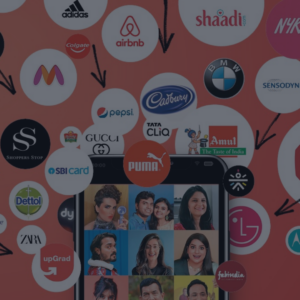Nowadays, in a market filled with similar products with comparable features, you must optimise your marketing to generate more awareness about your brand and products and reach your audience effectively. This involves not marketing your brand or products as everything to everyone but focusing on marketing based on your audiences’ needs and expectations.
In other words, you need to implement an audience-first marketing approach in your business. When you do, you’ll market your brand and products more effectively and efficiently, which translates into more sales and higher revenue.
But now the question is: How do you do this? Fortunately, we’re here to help.
In this post, as we did in a recent podcast, we’ll look a little closer at audience-first marketing and where you should start when you want to implement an audience-first strategy in your business.
What is Audience-First Marketing?
When you implement an audience-first marketing strategy, you focus on your audience and develop marketing strategies, tactics, and content around their needs and expectations. In turn, to focus on your audience, you need to gather data that shows you what they like and what they don’t.
In other words, for audience-first marketing to be effective, you must build a robust understanding of your customers. This involves knowing:
- The key things they care about.
- The things they do.
- Their personality traits.
However, when implementing your strategy, it’s important to remember that data is not the be-all and end-all of your efforts, and you still need a good idea that resonates with your audience. In other words, you still need to be creative but within the confines of what your consumer intelligence shows you about your audience.
Where to Start With Audience-First Marketing?
Simply put, audience-first marketing starts with data. Data is an observational tool that, upon analysis, gives you deeper insights into your audience, which helps you understand what type of products they like, what marketing content they resonate with, and what drives them to buy a specific product.
But why gather data about an audience and not about a specific customer? It’s simple. When you only focus on a single customer, you focus on their needs. However, no two customers are alike, and their expectations about a brand or product will differ.
In contrast, you have access to diverse backgrounds, tastes, and preferences when looking at an audience. In other words, it gives you access to more information.
From this information, you can then build the profile of an ideal consumer who is more likely to buy your products or resonate with your brand.
Based on this, you can plan your marketing strategies to target your customers better, develop the message you want to convey, and create content that resonates with your customers.
You’ll also be better able to brief stakeholders to develop ideas and campaigns that will be more effective and efficient at marketing your brand or products.
However, when gathering and analysing consumer data, there are several things you should consider. For one, you should avoid looking at data from a purely quantitative perspective. This can skew the insights that you’ll get from the data.
Instead, you should apply qualitative frameworks over quantitative data. When you do, you’ll apply a certain degree of empathy, understand your customers better, and know the challenges and problems they face. You can almost think of it as knowing your audience better than they know themselves. With this knowledge, you’ll be able to make your consumer data work more strategically and make better decisions about your marketing and product strategies.
Considerations
Another important aspect to consider when it comes to data is that you gather and analyse data about your audience consistently and continuously. This is simply because your audience’s needs, expectations, and patterns of behaviour change and evolve over time, enabling you to change your strategy and tactics to adapt to these changing expectations.
This is far better than just having a single snapshot in time. For one, when you’ve only observed your audience once in the past, you’ll attempt to predict future behaviour based on past behaviour, which is practically impossible. Moreover, this will give you an incomplete understanding of your customers.
As mentioned earlier, data is only one part of the audience-first marketing equation. You also need an idea that will resonate with your customers. So, once you’ve gathered and analysed your customer data and extracted valuable insights from it, you should develop your idea based on these insights.
Using the Right Tools
Now that we’ve looked at audience-first marketing, it’s important to emphasise using the right tools to gather data. This is especially important considering the wealth of tools available on the market.
For instance, many people would say you can gather the above data using typical social listening tools. While you could, the problem is that typical social listening tools are built for bias. In other words, because they let you gather data based on keywords, they give you the answers you want to find.
To illustrate this challenge better, let’s look at a simple example. Typically, people don’t discuss brand names when discussing products in their daily lives. They typically only talk about the generic product.
So, they might refer to juice or breakfast cereal only without mentioning the brand.
That is unless it’s a brand synonymous with a specific product. For instance, people might refer to chocolate hazelnut spread as Nutella or plasters as Band-Aid.
Either way, this fact can skew your results with a typical social listening tool. For instance, when you enter ‘Nutella’ as a keyword into a social listening tool, you’ll only get results relating to Nutella, which is not very helpful for your marketing strategies.
Likewise, if we use our juice example, if you use ‘juice’ as a keyword, you’ll have tons of results, with a large amount of this data not being relevant to the data you want. You’ll have to use more keywords to find the data you need. This leads to confirmation bias or, in other words, the information you want to find.
Challenge
Another challenge with typical social listening tools is that they often provide data that lacks context. So, they don’t show you the circumstances in which a specific product or brand is mentioned. This reinforces biases, which, in turn, skew the data.
This is why consumer behaviour, as mentioned above, is so important as it provides a deeper context to consumers’ discussions. This improves the quality and richness of the data you gather and the insights you get from the data.
Ultimately, several tools are available on the market today that you can use to gather consumer data that can inform your marketing strategies and tactics. This means you should find the tool that meets your specific needs and requirements, but you’ll be well served by using a tool that takes audience behaviour into account to enrich the data you’ll be able to gather.
The Bottom Line
When you want to market your brand and products more effectively and efficiently than ever before, you must take an audience-first approach to the market. When you do, you’ll focus on your audience’s needs and expectations in every marketing strategy you develop and every marketing tactic you implement.
This allows you to align your marketing efforts to what your audience wants, which translates into an ability to generate more awareness about your brand, increased reach, more sales and increased revenue. Simply put, if you put the right product in front of the right people at the right time, you’ll sell more products.
However, you need to use the right tools to develop your strategy. And here, Sila is the perfect fit. With it, you’ll get the most accurate insights into Arabic-speaking consumers, enabling you to market better and grow your business in the Middle East.








